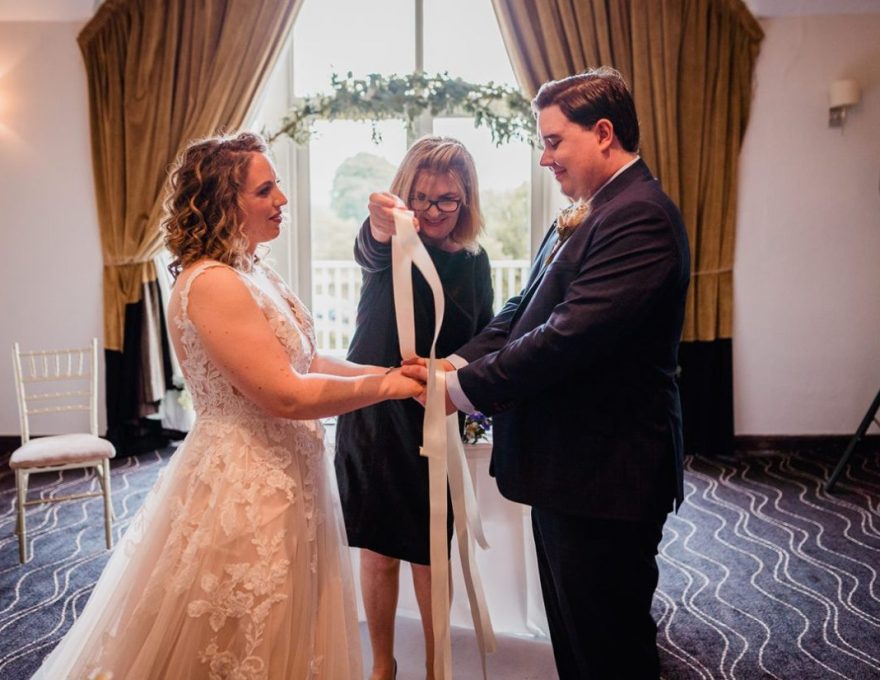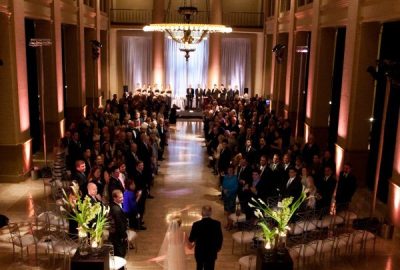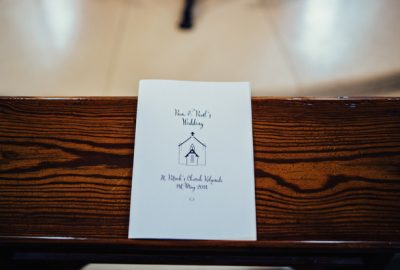I love it when couples personalise their wedding ceremony by including special traditions that mean something to them. A handfasting ceremony is one way to do just that!
Related: How To Personalise Your Wedding Ceremony
If you’ve ever heard the phrase ‘tying the knot’, this is where it comes from! In this beautiful Celtic tradition, the couple’s hands are literally tied together to symbolise them joining together in marriage.
Featured image credit: Aidan Beatty
What is a handfasting ceremony?
Handfasting is a symbolic unity ritual, where a couple stands face to face as their hands are tied together. This is where the phrase ‘tying the knot’ comes from! While their hands are bound, the couple can recite words and express their commitment to one another. A handfasting ceremony is a ritual that is associated with Pagan ceremonies, but they are now often seen I secular, spiritual and Christian ceremonies too!
Let’s talk about the symbolism
Handfasting ceremonies have their roots in Celtic tradition and date as far back as 7000 B.C. In ancient Ireland, when two people got married, they were brought together and had their hands tied together in the presence of a priest with braided cord or ribbon.
This act was to acknowledge the engagement and it usually ran the length of a year! This public declaration of intent to marry signalled that the women was taken. Once the year was complete, the couple returned to the priest and either declared their intent to marry or that they weren’t a good match and could then choose another suitor.
Handfasting FAQs
Who conducts the handfasting ceremony? Talk with your celebrant, officiant or solemniser about the best way to go about doing this. You could either have them conduct the handfasting ceremony or invite somebody up to do it.
Can anybody have a handfasting ceremony? Handfasting ceremonies are traditionally seen in Pagan and Wiccan ceremonies but anybody can incorporate this traditional into their ceremony. The ‘tying the knot’ symbolism has made this ceremony very popular in modern day weddings (and probably because it was seen in Game of Thrones).
How should the hands be tied? Most people choose to face their partner, taking their right hand in your right hand and their left hand in your left hand. Another option is to stand side by side, joining one of your right hands with the other’s left and have the cord tied around your wrists.
Who should tie the cord? Usually the officiant will do that, but many couples are using this as an opportunity to include family members by having them tie the cord.
What kind of material should we use? You could use cord or ribbon or even cloth from sentimental items of clothing. Some couples choose to add charms, like horses, seashells or beads.
What size and colour should the material be? The material should be about one to two metres long so there’s enough of it to be wrapped around the hands a couple of times. You can choose any colour you like! You could match your wedding colour scheme or choose colours that are special to you.
How long should we remain bound? Traditionally, the couple would remain tied together until midnight, but of course you can take it off after the ceremony or wear it throughout the day (just be mindful that navigating the reception may be tricky). When you remove the cord, try to slip it off still intact and hold onto it as a lovely keepsake.


